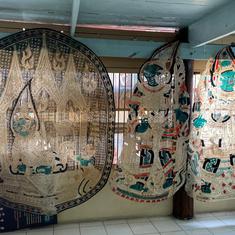We begin 2020 with the second episode of our series on Bhairavi, a raag originally prescribed for the morning but which has a ubiquitous presence at concerts through the day and night due to its flexibility with all 12 notes in the scale. In the past, this column has featured various sitar maestros presenting Bhairavi and noted vocalists interpreting the famous thumri Bajuband Khula Khula Jaaye composed in the same raag. But the many shades that the raag lends itself to deserve a few more episodes.
Today, we listen to tappas composed in Bhairavi. Most traditional tappas have been composed by the eighteenth-century musician Ghulam Nabi in dialects of Punjabi and his pseudonym Shori Miyan appears in the song-text. Broadly speaking, they are sung in the Banaras and Gwalior traditions of tappa singing.
The flexibility of Bhairavi to create tonal centres other than those that are strictly prescribed as per the rules of the raag lends itself superbly to the tappa form, which includes unpredictability in the length, pattern and tempo of melodic phrases.
We begin with exponents of the Banaras style. Siddheshwari Devi sings a tappa set to the Sitarkhani or Addha taal, a rhythmic canvas of 16 time-units or matras.
The second track features another tappa set to the same taal sung by Girija Devi.
Moving to the Gwalior gharana, Krishnarao Shankar Pandit sings a tappa set to a fast-paced 16-matra Teentaal.
The next tappa is set to a medium-paced Punjabi taal, also a 16-matra canvas. This is presented by Sharadchandra Arolkar.
Sharad Sathe sings a tappa set to the seven-matra Pashto taal.










